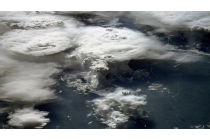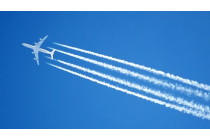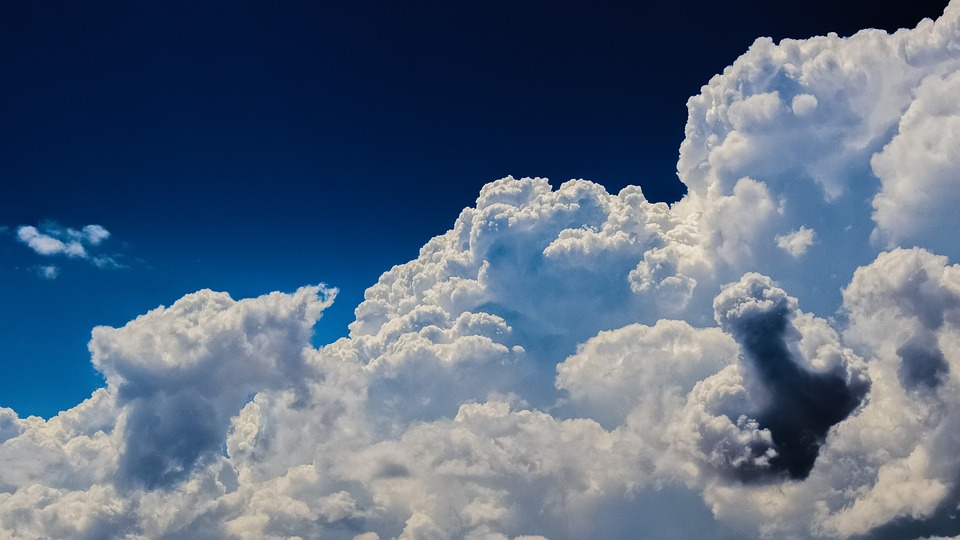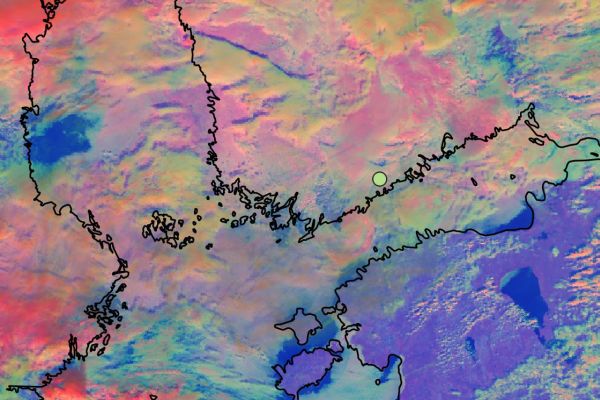Identify cloud types and their characteristics
Identify clouds made of water droplets, ice particles or a mixture and discriminate between clouds with small or large cloud particles.
In this part of the course you will not only learn more about the identification of clouds such as Stratus, Cumulus and Cirrus from satellite images, and you will also discover various methods to derive cloud height information. Microphysical properties of clouds like cloud phase and cloud particle size are also addressed.
To access the resource click here.
Note: all resources are provided as an external link which redirects you to https://eumetcal.eu where you will need to create a user account in order to gain access to the course
Deduce cloud top heights based on brightness temperatures, surface observations and sounding data.
In this part of the course you will not only learn more about the identification of clouds such as Stratus, Cumulus and Cirrus from satellite images, and you will also discover various methods to derive cloud height information. Microphysical properties of clouds like cloud phase and cloud particle size are also addressed.
To access the resource click here.
Note: all resources are provided as an external link which redirects you to https://eumetcal.eu where you will need to create a user account in order to gain access to the course
Identify contrails and ship trails.
In this part of the course you will not only learn more about the identification of clouds such as Stratus, Cumulus and Cirrus from satellite images, and you will also discover various methods to derive cloud height information. Microphysical properties of clouds like cloud phase and cloud particle size are also addressed.
To access the resource click here.
Note: all resources are provided as an external link which redirects you to https://eumetcal.eu where you will need to create a user account in order to gain access to the course
Identify fogs and discriminate between fog and low cloud.
In this part of the course you will not only learn more about the identification of clouds such as Stratus, Cumulus and Cirrus from satellite images, and you will also discover various methods to derive cloud height information. Microphysical properties of clouds like cloud phase and cloud particle size are also addressed.
To access the resource click here.
Note: all resources are provided as an external link which redirects you to https://eumetcal.eu where you will need to create a user account in order to gain access to the course
Identify cumulonimbus clouds and their characteristics.
In this part of the course you will not only learn more about the identification of clouds such as Stratus, Cumulus and Cirrus from satellite images, and you will also discover various methods to derive cloud height information. Microphysical properties of clouds like cloud phase and cloud particle size are also addressed.
To access the resource click here.
Note: all resources are provided as an external link which redirects you to https://eumetcal.eu where you will need to create a user account in order to gain access to the course
Identify stratiform, cumuliform and cirriform cloud regions and individual cloud forms and their characteristics.
In this part of the course you will not only learn more about the identification of clouds such as Stratus, Cumulus and Cirrus from satellite images, and you will also discover various methods to derive cloud height information. Microphysical properties of clouds like cloud phase and cloud particle size are also addressed.
To access the resource click here.
Note: all resources are provided as an external link which redirects you to https://eumetcal.eu where you will need to create a user account in order to gain access to the course
Pia Isolahtenmaki (stepping in for Robert Makitie) presents how FCI proxy data help in differentiating cloud types in low-cloud conditions.
On the 11th of September an almost stationary frontal system occurred over southern Finland leading to development of a large fog cloud over the Gulf of Finland and the Baltic Sea. The fog later moved slowly over southern Finland, where Finland’s busiest airport, Helsinki-Vantaa airport, is located. The fog cloud that occurred over the Gulf of Finland was hard to spot from SEVIRI images due to different layers of middle and high clouds. When thinking about the future, the question arises, would the FCI have spotted something more in this situation?
Joseph Sienkiewicz gives a presentation on satellite altimeters. He compares the satellite altimeter data from different sensors with NWP forecast data.
Conventional observations of wind and wave data from ships and buoys are limited by coverage. Due to the increasing size of ships, observers are more removed from the ocean surface and wave estimation is more difficult. Satellite altimeters are a downward pointing radar that scan the oceans and provide very accurate observations of wave height, wind speed, sea surface height anomaly. Our understanding of sea level-rise is due in large part to the record of altimeter based sea level data.
Forecasters responsible for ocean and coastal waters must rely on any information for situational awareness and to keep forecasts relevant. Satellite altimeters provide very accurate coincident measures of significant wave height and wind speed. Integrated data display and product generation systems offer the opportunity for forecasters to compare a variety of observations, imagery, and numerical model predictions to enhance awareness and communicate hazards to mariners. This session will discuss the use by forecasters of altimeter wave and wind data with other sources in an operational forecast center.
Hervé Le Gléau and Thomas Krennert give an overview on the NWC-SAF cloud products and their applications.
In this 30 minutes presentation, Hervé Le Gléau (MFL) gives an overview of the cloud products that can be retrieved from the MSG/NWCSAF software. These products are the cloud mask (including dust and volcanic ash flag), the cloud type (including the cloud thermodynamical phase), and the cloud top temperature and height. The algorithms will be outlined and some validation results presented. Finally short information will be given on the new cloud microphysics product planned in the NWC/GEO software version 2015.
In a second talk, Thomas Krennert from ZAMG will present case studies using the NWCSAF Cloud Products.
Anna Eronn gives an overview on the NWC-SAF PPS products and their applications, Thomas Heinemann presents the Eumetcast system.
The PPS package for Polar orbiting satellites produces Cloud Products for NOAA, METOP and the NPP-Suomi satellites. Products available are Cloud mask (CM), Cloud Type (CT), Cloud Top Temperature and Height (CTTH) and Cloud Physical Properties (CPP) during day CPP validated outputs are cloud phase and cloud liquid water path, as well as the auxiliary output fields cloud optical thickness, effective droplet radius and ice water path.
While the software package was originally aimed at producing NWC products for local satellite receiving stations, a subset of cloud products (CT and CTTH) are now also available in near real time via EUMETCAST within the NWC-EARS service.
In a second talk, Thomas Heinemann will present the EARS-NWC service. Data from the SAFNWC PPS package are computed at EUMETSAT headquarter and distributed via Eumetcast service to end-users.
Aynur Sensoy Soman discusses a blending approach to use SE-E-SEVIRI(H10) data together with Sentinel-2 and MODIS into a real-time, operational cryosphere modelling chain.
Increasing satellite technology offers new products for hydrological applications. The validation process is crucial for these products before they are used in operational applications. The validation of satellite data sets can be done through the direct comparison with ground truth data or a reference satellite data. Another, indirect approach consists in using these datasets in models with different complexities and assess the realism of modelled outputs (so called “Hydro Validation”). EUMETSAT H SAF project provides daily snow products on snow recognition, fractionalsnow cover, snow status and snow water equivalent over complex topographies changing from flat land to mountainous areas.
In this this first part, we will discuss a blending approach to use SE-E-SEVIRI(H10) data together with Sentinel 2 and MODIS into a real-time, operational cryosphere modelling chain (S3M-Italy). We will compare open-loop simulations with simulations obtained assimilating H10 data to discuss the added value of this product for real time forecasting.
Although may considered as the answer to all problems, satellite also come with some limitations. In this lecture one such limitation "Parallax Shift" is explained.
Although may considered as the answer to all problems, satellite also come with some limitations. In this lecture one such limitation, Parallax Shift is explained, and how you have to take this into account. Fortunately there are some solutions available to overcome this problem, which are also explained by Martin Setvak (CHMI).












